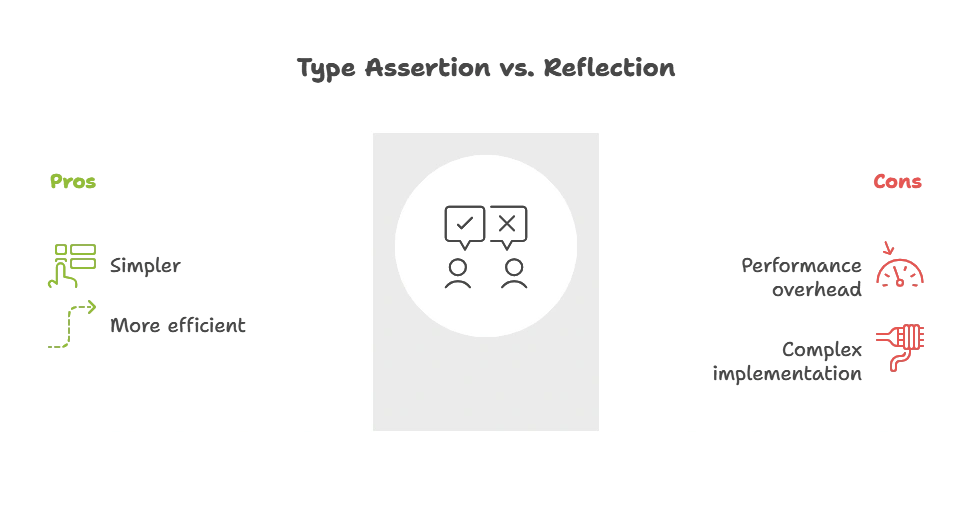Reflection in Go
Reflection is a powerful feature in Go that allows programs to inspect and manipulate their own structure at runtime. With reflection, you can examine types, values, and structs, and even call methods dynamically. This chapter explores reflection in Go from the basics to advanced techniques, enabling developers to leverage its full potential.
Understanding Reflection Basics
Basic Concepts
Reflection in Go revolves around the reflect package, which provides functions and types for runtime introspection. It allows you to obtain type information, inspect struct fields, and call methods dynamically.
Inspecting Types
The reflect.TypeOf function returns a reflect.Type representing the dynamic type of a value. This type object contains information about the type’s name, methods, fields, and more.
package main
import (
"fmt"
"reflect"
)
func main() {
var x int = 42
fmt.Println(reflect.TypeOf(x)) // Output: int
}
Examining Structs with Reflection
Inspecting Struct Fields
Reflection allows you to examine the fields of a struct dynamically using the reflect.Value type. You can access and modify struct fields at runtime, making reflection a powerful tool for building flexible applications.
package main
import (
"fmt"
"reflect"
)
type Person struct {
Name string
Age int
}
func main() {
person := Person{Name: "Alice", Age: 30}
v := reflect.ValueOf(person)
for i := 0; i < v.NumField(); i++ {
fmt.Printf("Field %d: %s\n", i, v.Field(i))
}
}
Dynamic Method Invocation
Calling Methods Dynamically
Reflection enables dynamic method invocation in Go, allowing you to call methods on objects without knowing their types at compile time. This flexibility is particularly useful for building generic algorithms and implementing plugins.
package main
import (
"fmt"
"reflect"
)
type Calculator struct{}
func (c Calculator) Add(a, b int) int {
return a + b
}
func main() {
calculator := Calculator{}
method := reflect.ValueOf(calculator).MethodByName("Add")
args := []reflect.Value{reflect.ValueOf(10), reflect.ValueOf(20)}
result := method.Call(args)
fmt.Println("Result:", result[0].Int()) // Output: 30
}
Creating Instances Dynamically
Reflection allows you to create new instances of types dynamically, which can be useful in scenarios such as dependency injection or object factories.
Type Assertion vs. Reflection
While reflection provides powerful capabilities, it comes with performance overhead and should be used judiciously. In many cases, type assertion (interface{}) may be a simpler and more efficient alternative.

Reflection in Go is a powerful tool that allows programs to inspect and manipulate their own structure at runtime. By understanding the basics of reflection and mastering advanced techniques, developers can build flexible and dynamic applications that adapt to changing requirements. Happy coding !❤️
